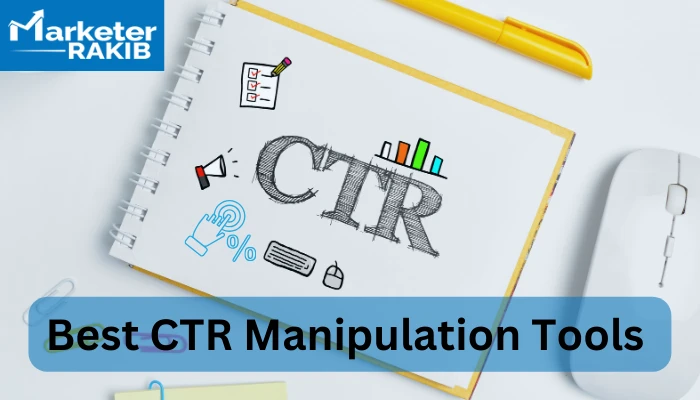LinkDaddy CTR Manipulation: Transform Your Online Approach Today!
LinkDaddy CTR Manipulation: Transform Your Online Approach Today!
Blog Article
How to Determine the Impact of CTR Manipulation on Your Marketing
Understanding the subtleties of click-through rate (CTR) control in marketing is essential for businesses aiming for genuine individual involvement. By checking out key metrics such as conversion prices and bounce rates, marketers can discover possible disparities that may arise from artificial enhancements.
Recognizing CTR Control
Understanding CTR manipulation is necessary for marketing professionals seeking to maximize their projects and make sure data integrity. Click-through rate (CTR) refers to the proportion of users that click on a particular link to the complete number of customers who watch the promotion or material.
The implications of CTR adjustment expand past plain data distortion; they can weaken count on electronic advertising and marketing. When services rely upon filled with air metrics, they may buy ineffective projects, inevitably damaging their return on financial investment. In addition, platforms might punish marketers involving in such techniques, leading to more implications for their advertising and marketing efforts.
To effectively fight CTR control, marketers should develop a detailed understanding of their data resources and analytics tools. By using innovative monitoring approaches and looking at website traffic resources, they can make sure and recognize irregular patterns that their performance metrics mirror real customer interaction - CTR Manipulation Service. This caution is critical for cultivating lasting success in an increasingly affordable digital landscape
Trick Metrics to Analyze
Reliable analysis of essential metrics is critical for evaluating real efficiency of marketing projects and detecting prospective CTR manipulation. One key statistics to take into consideration is the Click-Through Rate (CTR) itself, which represents the ratio of customers who click an ad to the total number of individuals that see it. An abrupt spike in CTR might suggest control, requiring more examination.
In addition, keeping track of conversion rates is essential. A high CTR with a reduced conversion price might signify that the clicks are not real or that the targeting is misaligned (GMB CTR Manipulation). Evaluating bounce rates can give understanding right into user interaction; a high bounce price after a click may suggest that the web traffic is not quality-driven.

Tools for Dimension

Additionally, A/B testing devices such as Optimizely or VWO can promote experimentation with different ad versions to establish which elements drive higher CTR. These tools permit marketing professionals to assess real-time performance and make data-driven modifications. Social media site analytics tools, like Hootsuite or Sprout Social, can also contribute in recognizing CTR within social platforms, providing insights right into audience habits and involvement trends.
Furthermore, warmth mapping devices, such as Hotjar, can reveal how individuals communicate with advertisements, helping to determine where enhancements can be made. Combining these tools creates a durable dimension structure, making it possible for marketing experts to discern the results of CTR control properly. Eventually, the appropriate selection of dimension devices is essential for making notified marketing decisions and optimizing campaign efficiency.

Assessing Long-lasting Results
One must think about the long-lasting effects of CTR control on overall marketing efficiency, as short-term gains can often mask much deeper effects. Over time, artificially pumped up click-through prices may result in reduced depend on from customers and online search engine alike. When users continuously run into deceitful techniques, they might come to be hesitant to involve with the brand, go resulting in lower conversion rates in the future.
Additionally, algorithm updates from platforms such as Google are developed to prioritize genuine engagement over inflated metrics. Companies that rely on CTR manipulation might discover themselves penalized, leading to a decline in natural reach and presence. This can have a plunging impact on brand trustworthiness and customer commitment, inevitably weakening the very objectives that the first control sought to achieve.
Furthermore, the information accumulated from controlled CTR may misguide marketers in their approach advancement. Counting on skewed data can cause misdirected campaigns that fall short to resonate with the target audience, causing click here for more info lost resources and missed out on opportunities. Therefore, it is vital for marketing experts to analyze the long-lasting implications of CTR control and focus on sustainable, ethical interaction strategies for lasting success.
Moral Factors To Consider in CTR Manipulation
In the world of digital advertising and marketing, honest factors to consider bordering CTR manipulation are vital. While the desire to improve click-through prices (CTR) can lead to temporary gains, the potential lasting effects on brand honesty and customer count on can not be ignored.
Furthermore, ethical concerns reach compliance with regulations such as the Federal Profession Commission (FTC) standards, which mandate openness in advertising and marketing. Falling short to stick to these requirements can reveal businesses to legal implications and damage their online reputation. Marketing experts need to take into consideration the effects of their techniques on customer experience and the broader sector landscape.
Furthermore, the increase of man-made intelligence and automation in marketing provides more moral issues. The best site potential for algorithmic bias or the exploitation of customer information raises inquiries regarding accountability and fairness. Inevitably, honest advertising methods need to focus on transparency, sincerity, and regard for the customer, promoting lasting connections that transcend mere metrics like CTR. Stabilizing performance with principles is crucial for lasting success in the digital industry.
Verdict
To conclude, measuring the effect of CTR manipulation on advertising needs an extensive analysis of essential metrics, consisting of click-through rates, conversion prices, and bounce prices. Using analytics devices and performing A/B testing can give important understandings right into individual interaction and website traffic high quality. Furthermore, assessing lasting impacts and sticking to honest considerations is essential for educated decision-making. Ultimately, a data-driven method guarantees that advertising techniques are efficient and aligned with real user interactions.
Understanding the subtleties of click-through rate (CTR) control in marketing is essential for services striving for genuine individual interaction.Reliable analysis of key metrics is essential for evaluating the real performance of advertising campaigns and discovering possible CTR adjustment.One must think about the long-term impacts of CTR control on overall marketing performance, as temporary gains can typically mask deeper implications.In the world of electronic marketing, moral factors to consider surrounding CTR manipulation are paramount.In verdict, gauging the impact of CTR adjustment on advertising calls for an extensive analysis of key metrics, including click-through rates, conversion rates, and bounce prices.
Report this page